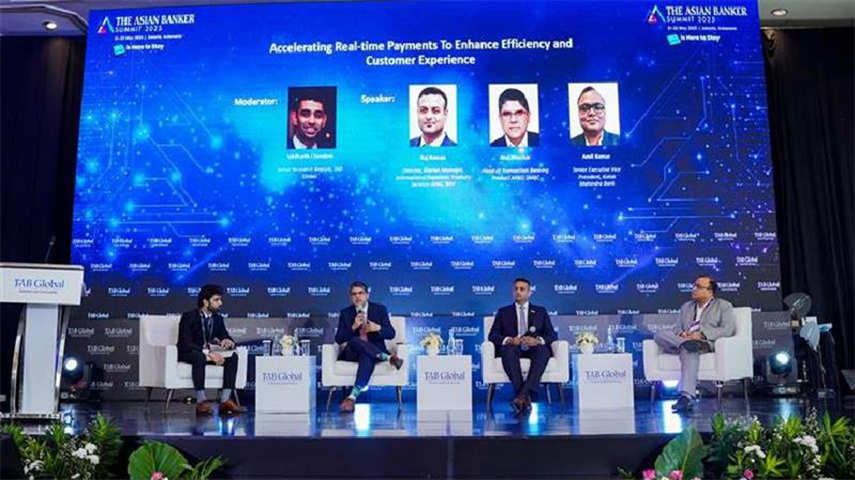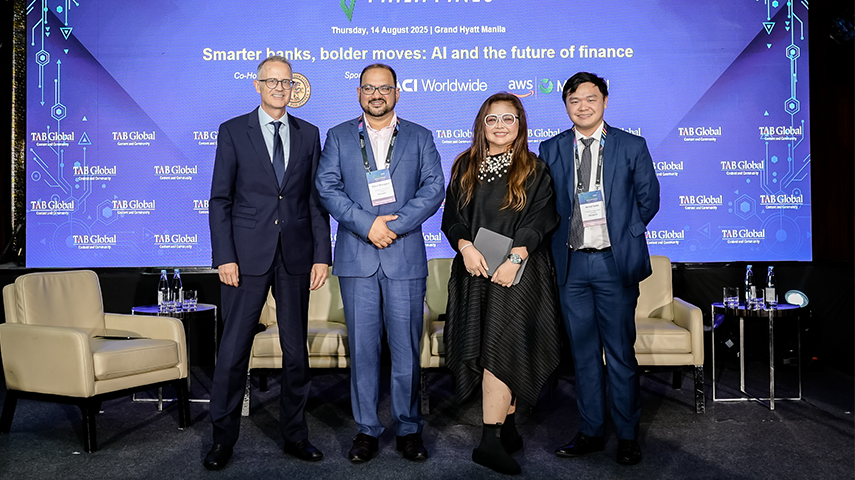The growth of real-time payments is reshaping global finance, driven by customer demand, regulatory collaboration and the need for interoperable systems. Banks are upgrading infrastructure, tailoring services and enhancing the customer journey through improvements in speed, intelligence and risk management. Global payment volumes are forecast to rise nearly 300% between 2023 and 2030, as consumers and businesses in an always-on economy demand immediacy without delays. Meeting this expectation requires speed alongside security, intelligence and cross-border integration, since gaps in liquidity, data standards or fraud controls can turn efficiency into risk.
The Bank for International Settlements (BIS) reports that more than 70 countries now operate domestic instant payment systems, making real-time execution the global baseline. Payments are increasingly measured by trust as much as processing time, with liquidity certainty, fraud resilience, interoperability and programmability defining credibility. Atul Bhuchar, head of transaction banking product for Asia Pacific at Sumitomo Mitsui Banking Corporation (SMBC), called this shift a Darwinian test of survival, warning that banks unable to adapt risk losing relevance.
Real-time payments emerge as financial infrastructure
Bhuchar stressed that “payments is the bedrock of financial infrastructure, and when it becomes more efficient, the impact across trade, foreign exchange, securities, and capital markets is exponential.” He linked the rise of instant payments to the convergence of retail and corporate expectations and identified the next stage as connecting domestic schemes into global flows. Success will depend on trust and consistent standards. Technology firms have already set benchmarks for immediacy and convenience, which financial institutions must now meet.
Interoperability and standards shape the next stage
Bhuchar cited bilateral links such as Singapore’s PayNow, Malaysia’s DuitNow and India’s Unified Payments Interface (UPI) as progress, but stressed the greater potential of multilateral projects like the BIS-led Project Nexus, which seeks to link multiple national systems. He also pointed to Project Agora, which is trialling central bank digital currencies (CBDCs) in cross-border payments, noting that “programmable, purpose-bound money could change how value is exchanged and controlled.” Trials by central banks in Europe and Asia, including use cases such as restricting funds to school fees or trade settlement, highlight the need for governance frameworks that ensure transparency and clarity of purpose.
He added that ISO 20022, the latest international messaging standard, will make payments more structured and data-rich, improving monitoring and reconciliation. Corporates stand to gain through faster working capital cycles and services such as payment-on-behalf-of arrangements, though Bhuchar cautioned that “the weakest link in the chain determines the end-to-end efficiency.”
Raj Raman, director and market manager for international payments treasury services Asia Pacific at BNY Mellon, echoed these concerns, cautioning that inconsistent adoption threatens the promise of ISO 20022: “Banks interpret fields in different ways, which undermines the very idea of a standard. We hope that by 2026 there will be more consensus and true alignment.” This reinforced the point that progress relies on how uniformly infrastructure is applied across markets, not only on new technology.
Liquidity becomes the foundation of trust
Raman argued that the shift to real-time payments challenges the traditional correspondent banking model. “The old correspondent model may not be feasible going forward. Real-time payments are here to stay, and we must change and adapt.”
BNY Mellon has developed a smart routing model that lets clients choose between Automated Clearing House (ACH), Real-Time Gross Settlement (RTGS) or instant payment rails, and has partnered with Australian institutions to access the New Payments Platform. Yet Raman warned that speed does not guarantee reliability. “The challenge is not delivery, it is availability of funds. Many fintechs offer real-time, but often through pre-funded models. That is not true real-time cross-border. For banks, liquidity management must go hand-in-hand with technology.” He concluded that certainty of funds is the ultimate foundation of trust.
India demonstrates how scale can be achieved
Amit Kumar, senior executive vice president at Kotak Mahindra Bank, highlighted India’s experience as proof that immediacy can scale. He noted that UPI processed more than 170 billion transactions in 2024, growing at 45% annually.
Kumar explained Kotak’s three-tiered model. For small businesses, the bank developed its FIN platform, which provides enriched data, dashboards and analytics to support real-time processing. For corporates handling large bulk payment files, resilience and speed are essential to manage high-volume operations. For retail use cases in trade and e-commerce, Kotak has adopted light, application programming interface (API)-driven architectures. Expectations have shifted to the point where bulk payment processing, once an hour-long task, is now expected within minutes.
India’s model has drawn international attention, with the Monetary Authority of Singapore citing UPI as a benchmark for inclusivity and scale. Its layered integration of infrastructure, data and design shows how trust and immediacy can extend across client groups.
Customer confidence defines adoption
Bhuchar argued that banks must adopt what he called a “5I strategy” for payments: instant, intelligent, integrated, intuitive, and invisible. He explained, “No one wakes up in the morning wanting to make a payment. The experience has to be invisible, whether through a mobile number, QR code, or an Enterprise Resource Planning (ERP) system.”
Raman linked this directly to adoption. “Clients want to click a button and not worry about rejection or sanctions checks. They want instant confirmation.” He added that fraud detection has become an expectation, with clients assuming banks will block suspicious activity before funds move.
Kumar broadened the concept of experience to include mindset and risk. “The old model of sales relationship managers pitching products no longer works. Customers, especially new-age entrepreneurs, expect solutioning. Experience starts from the first conversation.” He added that interface design can matter more than marginal gains in processing time, and warned that “fraudsters are always ahead, so banks must defend at multiple levels.”
These perspectives demonstrate that adoption depends on more than technical reliability. Confidence in liquidity, fraud control and seamless design defines long-term trust.
Trust defines the long-term future of payments
Real-time payments are becoming the foundation of global finance. Their relevance will depend on the ability of institutions to embed resilience, interoperability and security into infrastructure. Upgrades and new service models will matter only if they deliver clear benefits to retail, corporate and institutional clients.
The agenda ahead rests on three priorities: building interoperable networks, aligning liquidity and treasury practices, and tailoring solutions to diverse client needs. Fraud prevention and programmable money are also emerging as competitive frontiers, and their significance will be measured by how far they reinforce trust.
Real-time payments began as a race for speed. Their permanence will be defined by the depth of trust they embed, which will decide their credibility as a core layer of global finance.
































